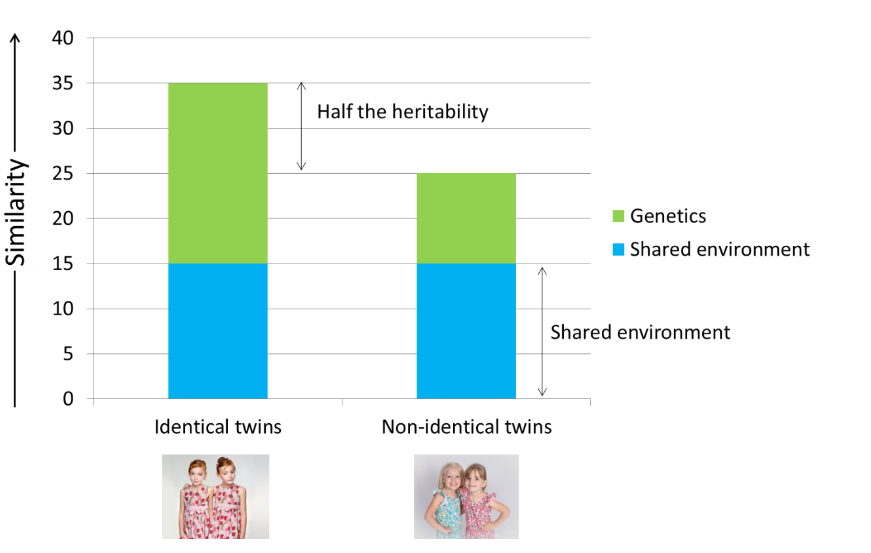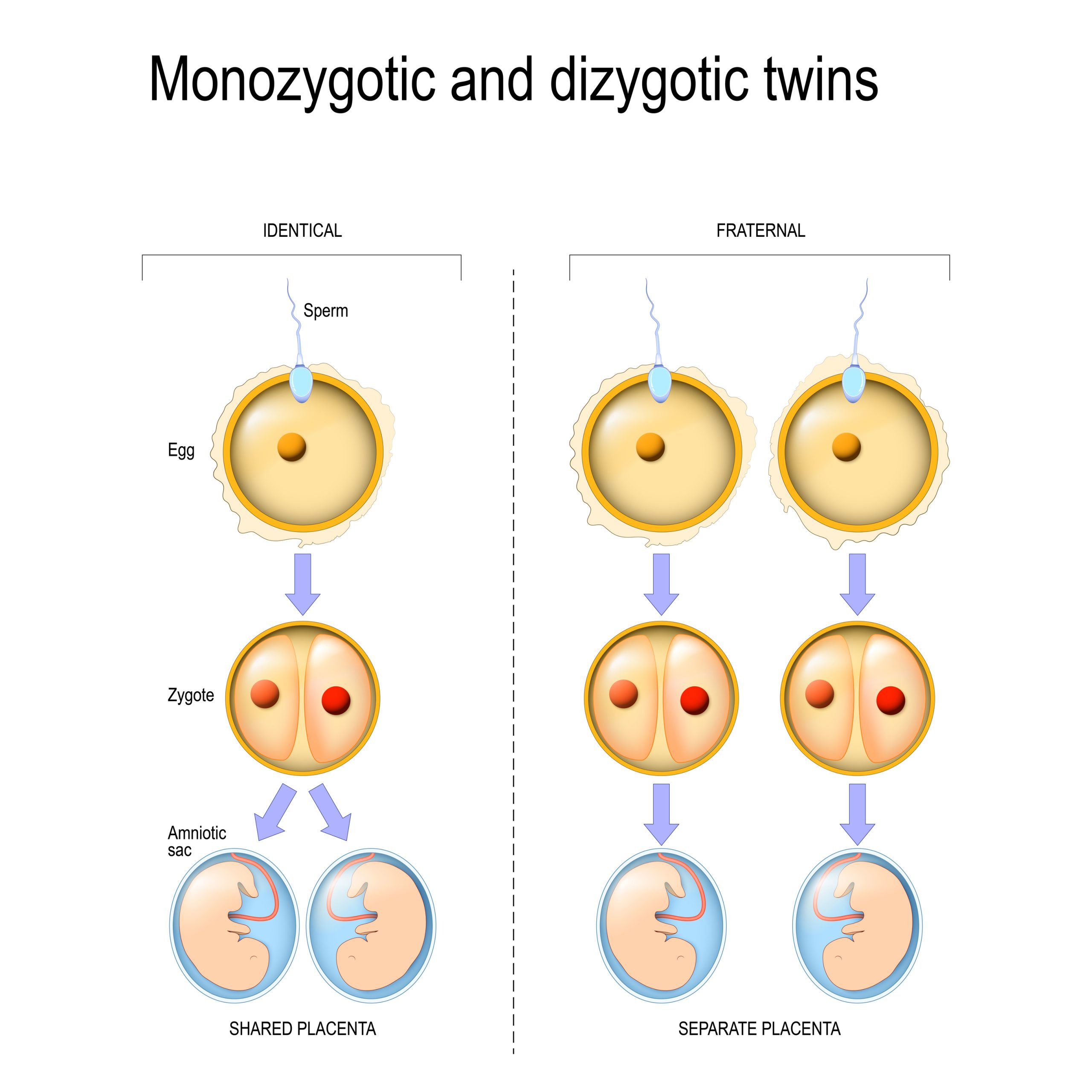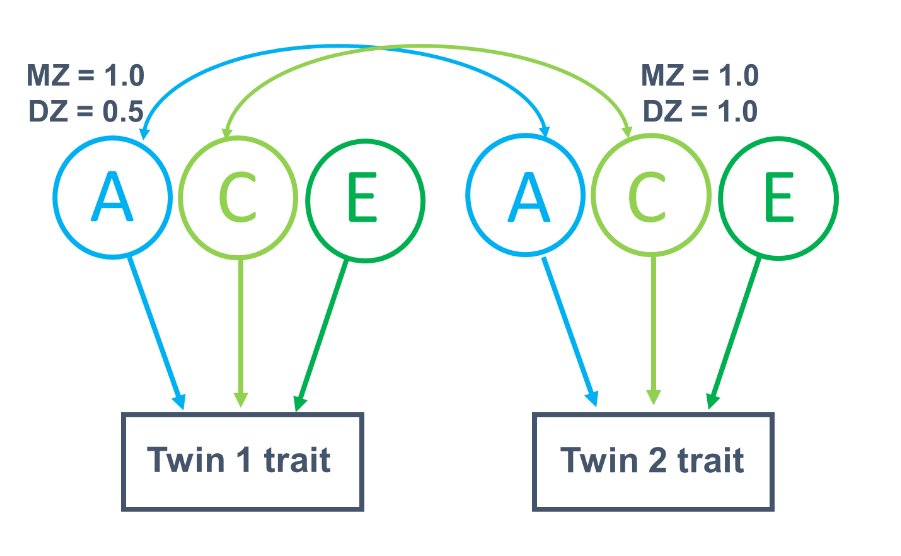We realised that despite having run our blog for over 5 years, and many of us using twin data, we had not yet written a brief overview of the twin method. Here Prof Thalia Eley provides a summary of the main principles underlying the approach.
Whilst behavioural genetics utilises many methods, including the adoption design, here we focus on the twin design which is a fantastic natural experiment. Identical or monozygotic (MZ) twins are created when a single fertilised egg splits into two. In contrast, non-identical or dizygotic (DZ) twins result from two eggs being fertilised at the same time. This contrast is used to learn about the role of genetic and environmental factors.
Starting with genetic factors, the majority of the genetic code does not differ between humans, but of the genetic differences there are, non-identical twins share around half, whereas identical twins share them all. The fundamental logic of the design is that any trait that is influenced by genetic factors will be more similar in pairs of identical twins than in pairs of non-identical twins.
Moving onto the environment, two types are captured. First is the shared or common environment, which is defined as that which results in similarity between twin pairs. This could include family-wide influences such as the local neighbourhood. Second is the nonshared environment which results in differences between twins. This could include experiences specific to each twin such as life events, but also includes any ways in which the twins are differentially influenced by an experience. For example, divorce of parents might impact very differently on two twins living in the same family.
The resemblance between twin pairs is measured using a correlation. The image below shows how the identical (MZ) and non-identical (DZ) twin correlations are made up of both genetic effects and shared or common environment.
These twin correlations are typically analysed using structural equation model-fitting. In the figure below, you can see two members of a twin pair, the trait of interest being represented by the rectangles. All three sources of influence are indicated in the circles: additive genetic factors (A), common or shared environment (C) and nonshared environment (E). The correlation between the two twins on a trait results from either the A pathway and/or the C pathway. The A influence on each twin correlates perfectly (i.e. correlation of 1) for MZ twins and is .5 for DZ twins. In contrast, because by definition their common environment is entirely shared, the correlation is 1 regardless of zygosity.
These models can be extended to ask questions about the genetic overlap between different traits, or on stability and change over time. These models can be extended to ask questions about the genetic overlap between different traits, or on stability and change over time.
In the area of anxiety and depression, we have typically found that genetic factors account for stability, and overlap amongst symptoms, whereas the environment is related more to change over time and specific presentations of symptoms. This pattern has been found in other areas of development too (for a review of the findings of 100 years of Behavioural Genetics see Plomin; 2023).
References:
Plomin, R. Celebrating a Century of Research in Behavioral Genetics. Behav Genet (2023). https://doi.org/10.1007/s10519-023-10132-3



